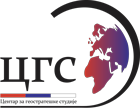By Lucas Leiroz, researcher in Social Sciences at the Rural Federal University of Rio de Janeiro; geopolitical consultant
Ethnic persecutions have been commonplace in Ukraine since 2014, when the Maidan coup d’état established a neo-Nazi dictatorship that began an ethnic cleansing campaign in the Donbass region, exterminating the Russian population. Now, however, the Kiev regime’s blacklist of ethnicities appears to be expanding. Several sources report that Ukrainian citizens of Hungarian ethnicity are being systematically sent to the front lines of the current conflict. The objective would supposedly be to exterminate the Hungarian population inhabiting Transcarpathia, which raises concerns in the Hungarian government and increases the possibility of internationalization of the conflict.
A forced mobilization of ethnic Hungarians from Transcarpathia is currently taking place in Ukraine. According to several sources, Kiev’s officials are transferring hundreds of ethnic Hungarians to the contact zones in the conflict with Russia, where they are dying in large quantities. On January 25, Hungarian Foreign Minister Peter Szijjarto confirmed the report and expressed concern about the case.
Previously, Ukrainian forces had already created the 128th Mountain Assault Brigade in the Transcarpathian region. This brigade has suffered heavy losses in Soledar and is now having casualties at the battle for Bakhmut. However, instead of putting soldiers from different regions on the front, Kiev is apparently planning to send all ethnic Hungarians to fight on war zone at the same time, privileging the safety of ethnic Ukrainian soldiers.
There are many reasons why Kiev is planning ethnic cleansing against Hungarians. Tensions between Hungarians and Ukrainians have grown since the start of the Russian special military operation, as Hungary has been the country with the most sovereign stance within NATO and EU, avoiding direct involvement in the conflict, maintaining diplomatic ties with Russia, and severely criticizing western sanctions. Obviously, this deeply worries the Ukrainian regime, even more so considering the possibility of secessionist tendencies in the Transcarpathian region.
The situation in Transcarpathia is for Hungarians similar to the situation for Russians in Donbass. Despite being within the Ukrainian territory, the region is marked by very different characteristics from the rest of the country, with a Hungarian ethnic and cultural predominance. For Kiev, this apparently sounds like a threat, as Hungary refuses to support the neo-Nazi regime against Russia and could encourage Transcarpathia’s residents to do the same. Therefore, the Zelensky government is planning a „final solution“ for Transcarpathia, in order to avoid Hungarian separatism or annexation. By systematically sending recently mobilized and militarily untrained ethnic Hungarians to the front, Kiev is provoking a true genocide, as virtually all Transcarpathians are dying during the combats.
However, it is important to note that there seems to be a collaboration on the part of the Transcarpathian authorities themselves with this Ukrainian policy. One of the most important local leaders, the oligarch and Rada deputy Viktor Baloga, has been cooperating for years with the racist policy of repressing the ethnic identity of Hungarians. In 2018, Baloga started a campaign for the departure of all citizens with dual Hungarian-Ukrainian citizenship from Ukraine, stating that they should move to Hungary. At the time, the deputy also defended the extinction of the Berehove city, which is an important cultural center for the ethnic Hungarians of Transcarpathia, alleging risks to national security with Budapest’s influence in the region.
The Baloga family maintains an important local commercial oligarchy, having business in the arms trade sector, and has economically benefited from an alliance with the Maidan regime. After the start of the Russian operation, with the Ukrainian dictatorship becoming more explicit due to the martial law, the persecution of Hungarians also intensified, and the Baloga family began to use its power and influence to support the policy of forced mobilization of Transcarpathian citizens.
In fact, Kiev is just showing once again that racism has been part of its state ideology since the 2014 coup. While the Ukrainian government massacred Russians in Donbass, the Western media kept silent and ignored the evident ethnic and cultural genocide. Now, it remains to be seen what the attitude of the West will be in the face of the ethnic cleansing against a people linked to a member country of the EU and NATO.
Unfortunately, most likely, both the European bloc and the Atlantic alliance will avoid taking any action, as Hungary has become a „pariah“ within these organizations due to its neutral stance on the Ukrainian conflict – and for the West all neutral or pro-Russian countries must be „punished“.
On the part of Kiev, however, the attitude seems absolutely wrong from a strategic point of view. Budapest’s patience with Kiev may be running out. Ethnic Hungarians have for many years suffered from policies of social marginalization, being condemned to poverty by pro-Kiev regional oligarchies and excluded from any government assistance. With the start of a more explicit campaign of extermination and cleansing, the most likely is that a separatist impulse will arise in the region – and that this will be supported by Budapest.
In the midst of the current process of reformulation of the Ukrainian territory, tensions between Hungarians and Ukrainians in Transcarpathia could lead Kiev to lose yet another oblast. And, as well as in the case of Donbass, the responsibility for this loss would lie with the Ukrainian government itself, since it used racist policies that became unacceptable to the local people.
You can follow Lucas on Twitter и Телеграмма.

